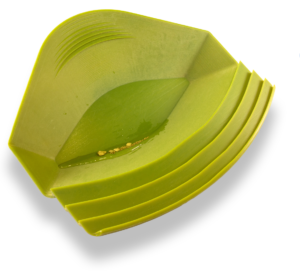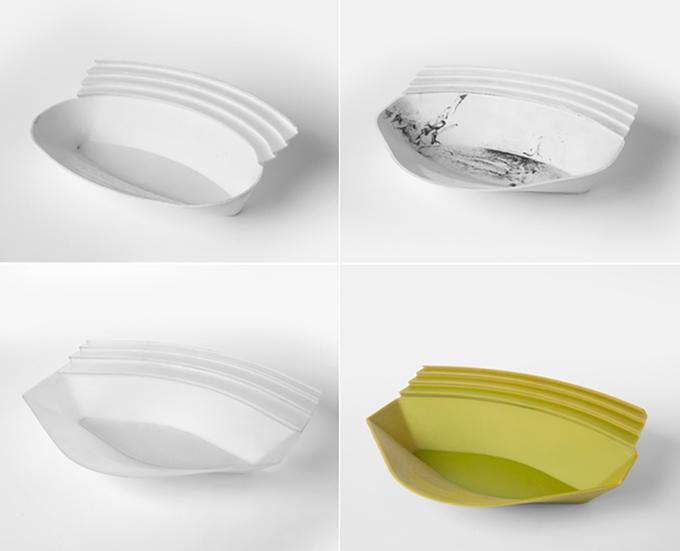 The Gold Rush may have ended more than a century ago, but one technique commonly used by the prospectors of the 1800s is still around today – albeit more as a hobby or fun activity than a means of making a living. Gold panning, which actually dates back to ancient Egypt, is simple enough for children – I remember doing it as part of an elementary school experiment years ago, in fact, but the technique has plenty of fans among adults, too. One of gold panning’s biggest fans may be Klint Washburn, a Utah-based engineer who has been immersed in the world of gold since a young age.
The Gold Rush may have ended more than a century ago, but one technique commonly used by the prospectors of the 1800s is still around today – albeit more as a hobby or fun activity than a means of making a living. Gold panning, which actually dates back to ancient Egypt, is simple enough for children – I remember doing it as part of an elementary school experiment years ago, in fact, but the technique has plenty of fans among adults, too. One of gold panning’s biggest fans may be Klint Washburn, a Utah-based engineer who has been immersed in the world of gold since a young age.
Washburn learned about gold from his father, a gold exploration geologist who shared his professional knowledge with his son. After seeing some of the issues his father was having with his gold machines, Washburn was inspired, as an adult, to build a new and improved system for the extraction of the precious metal. His interest in gold didn’t stop there; in fact, it only grew, leading him to pursue the ancient art of gold panning.
 He quickly realized that while learning how to pan for gold may be easy, learning how to do it well is much harder. Anyone can dip a perforated pan into a riverbed, but finding and capturing tiny flakes of gold within the muck is a serious challenge. While designing machines for the professional extraction of gold, Washburn realized that he could apply the same engineering principles he used for his machinery to a simple gold pan, and the Gold Claw was born.
He quickly realized that while learning how to pan for gold may be easy, learning how to do it well is much harder. Anyone can dip a perforated pan into a riverbed, but finding and capturing tiny flakes of gold within the muck is a serious challenge. While designing machines for the professional extraction of gold, Washburn realized that he could apply the same engineering principles he used for his machinery to a simple gold pan, and the Gold Claw was born.
While a traditional gold pan is wide, flat and round, the Gold Claw is shaped more like a broom pan, and thanks to Washburn’s engineering skill and extensive knowledge of gold, its shape works directly with the physical properties of gold to isolate it from the other materials in the pan. The way it works is surprisingly simple. As with a traditional gold pan, the panner dips the Gold Claw into the river and scoops up a panful of mud, gravel, and other river gunk, then shakes it. But instead of allowing the water to run out through a sieve-like bottom, the Gold Claw is solid, retaining the water along with the mud and minerals.
Suspended in liquid, the solid materials form layers based on weight. The heavier gold flakes sink to the bottom, while the dirt floats to the top and drifts out of the pan when submerged in the water. The gold, meanwhile, gets caught on a series of ridges and remains in the pan, as this seven-year-old demonstrates:
It looks so simple that it’s hard to believe no one ever came up with it before, but the Gold Claw took a lot of careful engineering and several prototypes before it was perfected by Washburn. The device, which is now on Kickstarter, was prototyped with help from WhiteClouds, the largest full-color 3D printing lab in the world and a company we have followed often. Washburn, who has some experience in 3D design, created a print-ready STL file and provided it to the service bureau, which printed several prototypes before arriving at the final version.“I used cad software to design the look and feel, incorporating the technology. Then I had to make a 3D printed prototype to test the weight and balance of the pan,” says Washburn. “Machining and casting would take too long and cost too much. I was able to send WhiteClouds a design and test the part two days later, test and turn another concept. Only 3D printing gave me the turnaround time, the cost, I needed while maintaining the properties of a final part.”
The first two prototypes were printed in sandstone-like material on a 3D Systems ProJet CJP 860Pro, while the production-quality working prototypes were created in rigid plastic on a Stratasys Connex3, in a print job consisting of 2265 layers and taking 19 hours. These prototypes were real world-ready and can be seen in the Kickstarter campaign materials. The final product will be injection molded in Tritan, a tough copolyester from Eastman.
“This project was particularly interesting to me because I grew up in a small mining town in Southern Nevada,” says WhiteClouds Production Specialist Heather Perkins, who oversaw the post-processing of the 3D printed prototypes. “I have done some panning with a traditional pan. Klint’s design is a vast improvement upon the traditional pan. I’m excited to see where this goes.”
The 3D printing involved in this project allowed for the design to go from concept to CAD to in-hand prototype quickly, while also allowing the WhiteClouds team time to work with the intricate design.
“For prototypes, it’s easy to rapidly fabricate your intended design through 3D printing. Because it is such a quick process, if any changes need to be done, it’s a matter of days rather than weeks to see the results,” said Perkins.
“It was one of the largest prints that I’ve ever done in a single piece. When I pulled it off the printer it was surprisingly heavy with all of the support material. Because of the unique shape, there was no way to orient it on the printer without needing great amounts of support material.”
Washburn and the Gold Claw company are trying to raise $20,000 by October 12, and rewards to backers will begin shipping right away. Early bird supporters will receive a Gold Claw pan for $25, half of the expected retail cost, while a contribution of $40 will get early birds a pan plus an accessory kit that includes a vial for storing, a snuffer to transfer the gold from the pan to the vial, a magnifying glass and a scoop. If you miss the early bird period, there are still plenty more rewards that include discounts and special pricing for multiple orders. The Gold Claw is available in green or transparent material.
“3D printing opens the doors for innovators, like Klint, because of its affordability. Inventors are no longer limited by their pocketbooks,” Perkins noted.
Check out the Kickstarter campaign video below, and discuss further in the 3D Printed Panning Device forum over at 3DPB.com.
Podcast: Play in new window | Download
Subscribe to Our Email Newsletter
Stay up-to-date on all the latest news from the 3D printing industry and receive information and offers from third party vendors.
You May Also Like
3D Printing Unpeeled: New Arkema Material for HP, Saddle and Macro MEMS
A new Arkema material for MJF is said to reduce costs per part by up to 25% and have an 85% reusability ratio. HP 3D HR PA 12 S has been...
3D Printing News Briefs, January 20, 2024: FDM, LPBF, Underwater 3D Printer, Racing, & More
We’re starting off with a process certification in today’s 3D Printing News Briefs, and then moving on to research about solute trapping, laser powder bed fusion, and then moving on...
3D Printing Webinar and Event Roundup: December 3, 2023
We’ve got plenty of events and webinars coming up for you this week! Quickparts is having a Manufacturing Roadshow, America Makes is holding a Member Town Hall, Stratafest makes two...
Intuitive Machines Debuts $40M Hub for Lunar Ambitions and 3D Printing Tech
Best known for its pioneering work in lunar exploration and its development of the Nova-C lunar lander, Intuitive Machines (Nasdaq: LUNR) has marked yet another significant milestone. The leading space...
































